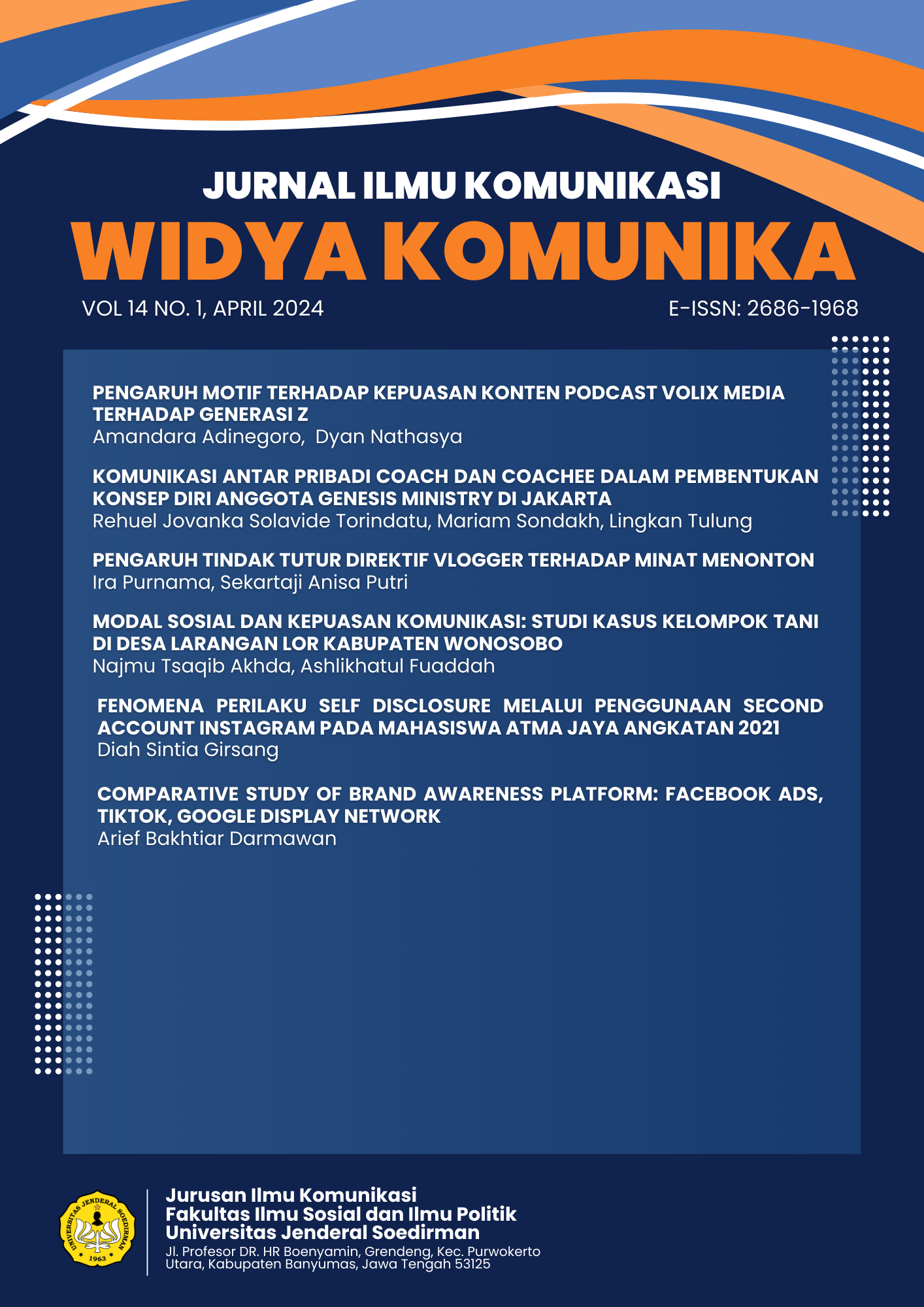Uses & Gratification Pengaruh Motif Terhadap Kepuasan Konten Podcast Volix Media Terhadap Generasi Z
Pengaruh Motif Terhadap Kepuasan Konten Podcast Volix Media Terhadap Generasi Z
Abstract
New media has provided new opportunities for people to innovate in their work. In addition to the convenience offered in this digital era, digital media has also developed and been used massively both to access information and entertainment. Volix Media was founded in 2021 and has now begun to experience significant development. Volix Media is a digital media company that is engaged in various social media platforms, namely YouTube, Instagram, TikTok, and the Official Website. Volix Media's tagline is "Cultivate Youth Culture" as it aims to cultivate the culture of the younger generation. For this reason, the study used quantitative methods and applied the Uses & Gratification theory, which aimed to analyze the motives for use and satisfaction obtained by 100 respondents of Volix Media's YouTube channel Podcast audience. The results showed that there is an influence of motives on the satisfaction of Volix Media Podcast content consumed by Generation Z with a very strong correlation of 0.802. Another interesting finding was that 64.5% of respondents agreed that the information in the Volix Media Podcast provided insights for their audience, and 62.6% stated that the content was relevant to the issues in young people's social lives. It can be said that the results of the satisfaction obtained are in accordance with the original purpose of Volix Media so that it can be accepted by young people.
Keywords: Motive, Satisfaction, Uses & Gratification, Volix Media




